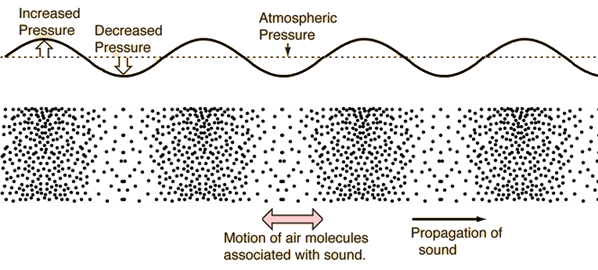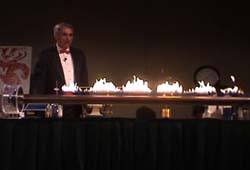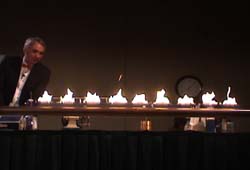Transverse WavesFor transverse waves the displacement of the medium is perpendicular to the direction of propagation of the wave. A ripple on a pond and a wave on a string are easily visualized transverse waves.  Transverse waves cannot propagate in a gas or a liquid because there is no mechanism for driving motion perpendicular to the propagation of the wave. |
Longitudinal WavesIn longitudinal waves the displacement of the medium is parallel to the propagation of the wave. A wave in a "slinky" is a good visualization. Sound waves in air are longitudinal waves. |
| Geologic example | Cork dust example | Slinky wave example |
Traveling wave concepts
Sound propagation concepts
| HyperPhysics***** Sound | R Nave |




